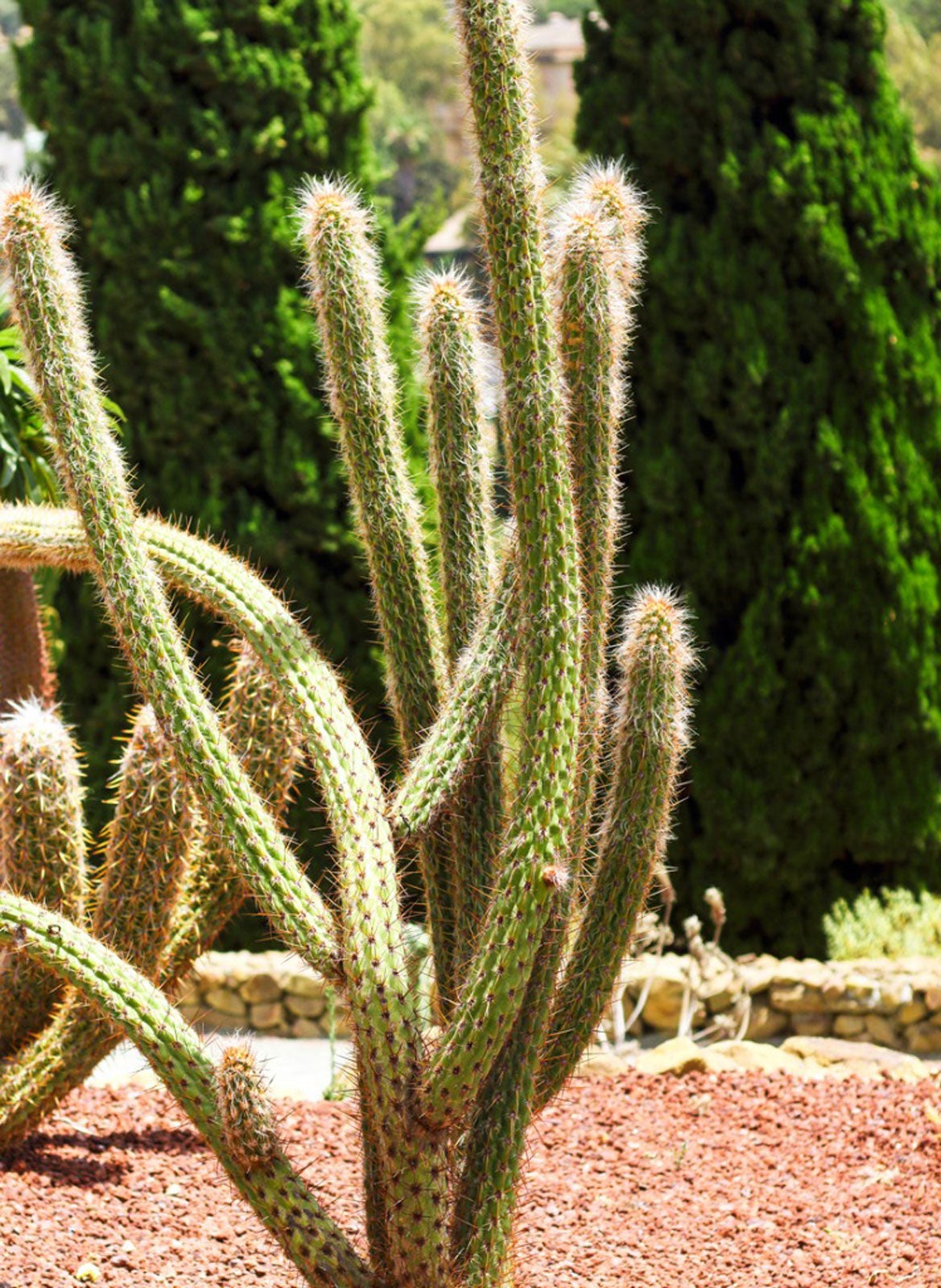What Are Cleistocactus Cacti – Cleistocactus Cactus Care Tips


Growing Cleistocactus cactus is popular in USDA hardiness zones 9 through 11. It adds an interesting form to the area where it is planted in the landscape. Read on for more info.
What are Cleistocactus Cacti?
Some of the more commonly planted cacti are of the Cleistocactus genus, like Silver Torch (Cleistocactus straussii) and the Golden Rat Tail (Cleistocactus winteri). These may also grow in large containers.
“Kleistos” means closed in Greek. Unfortunately, when using this as part of the name in the Cleistocactus genus, it is referring to the flowers. Multiple blooms appear on all varieties in this genus but don’t fully open. The plant offers a sense of expectancy that is never fulfilled.
These plants are native to the mountainous regions of South America. They’re found in Uruguay, Bolivia, Argentina, and Peru, often growing in large clumps. Multiple stems grow from the base, remaining small. Info about these cacti says their features are small but abundant.
Photos of the opening flowers show there are many blooms on each type. Flowers are shaped similarly to a lipstick tube or even a firecracker. In appropriate conditions, which are rare, flowers open completely.
The Silver Torch can reach 5 feet (1.5 m.) in height, while the Golden Rat Tail stems are about half that long with drooping, heavy columns cascading from the container. One source describes it as a tangled mess. It is attractive, though, to those who love the various forms of cacti.
Plants are easy to grow and maintain in the southern landscape or in a container that comes inside during winter.
Sign up for the Gardening Know How newsletter today and receive a free copy of our e-book "How to Grow Delicious Tomatoes".
Cleistocactus Cactus Care
Tending a cactus of this family is simple once the plant is properly located. Plant Cleistocactus in full sun in fast-draining soil. In the hottest areas, this plant prefers light afternoon shade. It is possible to provide full sun when the plant gets only morning sun if the sun reaches it early in the morning.
Water in spring and summer when the top few inches (8 cm.) of soil are dry. Reduce watering in autumn to about every five weeks if the soil dries out. Withhold water in winter. Wet roots along with cool temperatures and dormancy often cause root rot on these and other cacti. Many cacti should not be watered at all in winter.

Becca Badgett was a regular contributor to Gardening Know How for ten years. Co-author of the book How to Grow an EMERGENCY Garden, Becca specializes in succulent and cactus gardening.